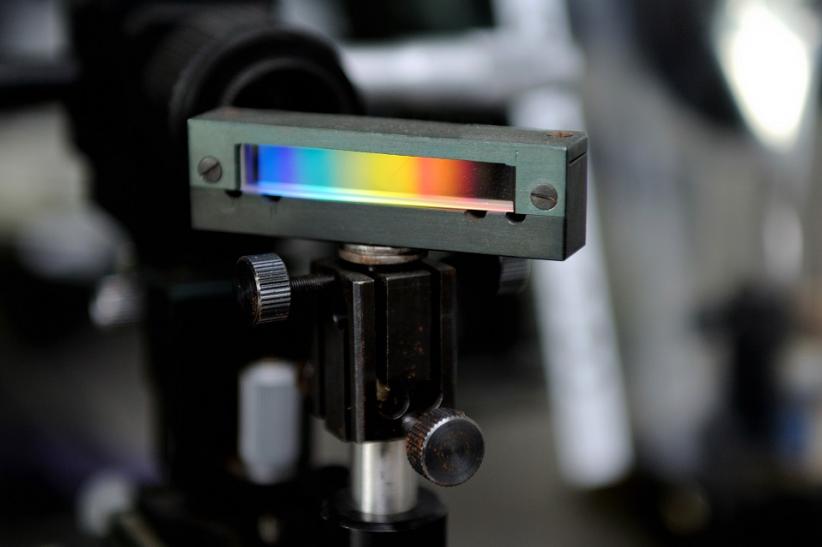Three years of the activity of POB Photonic Technologies
Summary at the halfway point
As part of the announced three editions of the competition for POB research grants, the Scientific Council of POB Photonic Technologies referred 31 projects for financing.
The projects included the one headed by Michał Makowski, PhD, associate professor, who jointly with a research team from the Warsaw University of Technology and the University of Bialystok, proposed a new method for recording holographic 3D images. The project concerned two types of materials. The first of these is a magnetic material (yttrium-iron garnet doped with cobalt), facilitating the use of ultrashort polarised light pulses to switch magnetisation, and as a result - optomagnetic recording (also photomagnetic). The unique advantage of this material is having a memory effect, transparency for visible light, and ultra-fast switching at a very low energy cost. The second material is a mixture of liquid crystal with gold nanoparticles, in which researchers demonstrated the relocation of nanoparticles under the influence of light pulses causing the instantaneous formation of isotropic domains. The project aimed to investigate the possibility of using dynamically addressed structures of both types for phase and amplitude-phase modulation of light in computer holography. The opticians' findings were published in Nature Communications journal.
As part of the POB Photonic Technologies grant, another team of PW scientists is working on a material with a negative refractive index. Not only will this reduce the heating of the photovoltaic cell, but also will facilitate increasing the efficiency of obtaining energy. The proposed solution is simple in terms of concept and implementation and can be used in any commercially available PV modules, which gives it a significant competitive advantage over the solutions proposed so far, requiring significant interference in the structure of the cell or module. More about the project >>>
Another interesting project concerns optical measurement methods, which are widely used, in the study of technical objects on a macro scale, or for viewing the biological microworld, among other things. Techniques that generate a striatal image are a particularly interesting group. PW scientists, as part of the POB Photonic Technologies grant, assumed the task of "cleaning" this type of image in order to be able to observe and study even more precisely the microworld around. The researchers shared their experience and knowledge with researchers from the group of Professor Balpreet Ahluwalii from The Arctic University of Norway in Tromso, who in their work observe fish cells, including how they move and how they are affected by microplastic contamination. More about the project >>>
Strategic activities
With the development of research infrastructure in mind, the Nanoscribe Photonic Professional GT2 printer was purchased from the funds of POB Photonic Technologies, among others. The printer facilitates the production of three-dimensional objects in very high resolution. The device is based on the two-photon absorption method, in which a pair of photons is involved in the polymerisation of a single chemical particle. By setting the parameters of the laser beam appropriately, researchers can cure the polymer only in the focus of the beam. The smallest curable shape is called a voxel and can be treated as the equivalent of pixels known, from two-dimensional displays, among others.
POB organised the DEMO-Center competition, under which its winners conducted a series of training sessions on the technology of using fibre optic sensors to monitor composite structures and a training session on the use of the latest devices for quantitative phase imaging at the cellular level.
Additionally, as part of the promotion of photonics, POB organised the first International Photonic Job Fair at the Faculty of Physics. During this event, several employers from Poland and abroad presented their offers, including Vigo Photonics, Inframet, Photo4chem, Smarttech3D, Signify, Fluence, Solaris Optics, Sygnis, and a delegation of an optical cluster from Berlin-Brandenburg - OptecBB.


